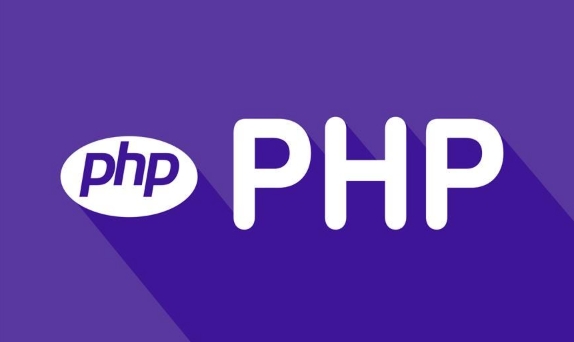To debug PHP code in the browser, use online sandboxes like 3v4l.org or JDoodle for quick tests, set up Xdebug with remote IDEs like Gitpod for advanced debugging with breakpoints, or use logging functions like var_dump() and error_log() in restricted environments; each method suits different scenarios and setup requirements.

If you're working with PHP and need to debug your code without leaving the browser, there are several online tools that can help. They range from simple sandboxes to more advanced debuggers with breakpoints and stack traces. Here's a breakdown of some commonly used options, along with tips on how to use them effectively.

Online PHP Sandboxes with Debugging Features
Some online PHP editors let you run and debug small snippets of code directly in the browser. These are great for testing logic or learning the language.

- 3v4l.org – This tool lets you run PHP code across multiple versions and see the output. It’s not a full debugger but helps spot version-specific issues.
- PHP Sandbox by phpsandbox.io – You can write and execute PHP code safely in an isolated environment. It supports variable inspection and basic debugging output.
- JDoodle or OneCompiler – These multi-language platforms include PHP support and show execution output instantly, which is helpful for quick tests.
These tools are best for short scripts or reproducing small bugs — they won’t replace a full development setup, but they’re handy when you just want to try something fast.
Xdebug with Online IDEs or Remote Setup
For deeper debugging (like setting breakpoints or stepping through code), you’ll typically need Xdebug, a powerful PHP extension. While it’s usually used locally with tools like PhpStorm or VS Code, you can also use it remotely.

- You can set up a remote server with Xdebug enabled and connect to it from your local IDE.
- Some cloud IDEs like Gitpod or GitHub Codespaces allow installing and configuring Xdebug so you can debug right in the browser.
- Make sure
xdebug.remote_enable=1and proper port settings are configured inphp.ini.
This method requires more setup but gives you real debugging power — like inspecting variables mid-execution or tracing function calls.
Logging and Output-Based Debugging
If you don't have access to a full debugger, sometimes the simplest way is to use built-in PHP functions:
- Use
var_dump()orprint_r()to inspect variables. - Log messages using
error_log()and check server logs. - Wrap debug output in
<pre class="brush:php;toolbar:false"></pre>tags for better formatting:echo '<pre class="brush:php;toolbar:false">'; print_r($my_array); echo '
';
While not as elegant as step-through debugging, this method works almost anywhere — even shared hosting environments where you can't install extra tools.
Tips for Choosing the Right Tool
- For quick checks: Go with a sandbox like 3v4l.org or JDoodle.
- For full-stack debugging: Use Xdebug with a remote IDE or local setup.
- In restricted environments: Stick with logging and output functions.
- Always clean up test code before pushing to production — especially if it contains sensitive data or debug-only routes.
That's basically it. Depending on your setup and needs, one of these methods should get the job done without too much hassle.
The above is the detailed content of What are the PHP online debugging tools?. For more information, please follow other related articles on the PHP Chinese website!

Hot AI Tools

Undress AI Tool
Undress images for free

Undresser.AI Undress
AI-powered app for creating realistic nude photos

AI Clothes Remover
Online AI tool for removing clothes from photos.

Clothoff.io
AI clothes remover

Video Face Swap
Swap faces in any video effortlessly with our completely free AI face swap tool!

Hot Article

Hot Tools

Notepad++7.3.1
Easy-to-use and free code editor

SublimeText3 Chinese version
Chinese version, very easy to use

Zend Studio 13.0.1
Powerful PHP integrated development environment

Dreamweaver CS6
Visual web development tools

SublimeText3 Mac version
God-level code editing software (SublimeText3)
 PHP Variable Scope Explained
Jul 17, 2025 am 04:16 AM
PHP Variable Scope Explained
Jul 17, 2025 am 04:16 AM
Common problems and solutions for PHP variable scope include: 1. The global variable cannot be accessed within the function, and it needs to be passed in using the global keyword or parameter; 2. The static variable is declared with static, and it is only initialized once and the value is maintained between multiple calls; 3. Hyperglobal variables such as $_GET and $_POST can be used directly in any scope, but you need to pay attention to safe filtering; 4. Anonymous functions need to introduce parent scope variables through the use keyword, and when modifying external variables, you need to pass a reference. Mastering these rules can help avoid errors and improve code stability.
 How to handle File Uploads securely in PHP?
Jul 08, 2025 am 02:37 AM
How to handle File Uploads securely in PHP?
Jul 08, 2025 am 02:37 AM
To safely handle PHP file uploads, you need to verify the source and type, control the file name and path, set server restrictions, and process media files twice. 1. Verify the upload source to prevent CSRF through token and detect the real MIME type through finfo_file using whitelist control; 2. Rename the file to a random string and determine the extension to store it in a non-Web directory according to the detection type; 3. PHP configuration limits the upload size and temporary directory Nginx/Apache prohibits access to the upload directory; 4. The GD library resaves the pictures to clear potential malicious data.
 Commenting Out Code in PHP
Jul 18, 2025 am 04:57 AM
Commenting Out Code in PHP
Jul 18, 2025 am 04:57 AM
There are three common methods for PHP comment code: 1. Use // or # to block one line of code, and it is recommended to use //; 2. Use /.../ to wrap code blocks with multiple lines, which cannot be nested but can be crossed; 3. Combination skills comments such as using /if(){}/ to control logic blocks, or to improve efficiency with editor shortcut keys, you should pay attention to closing symbols and avoid nesting when using them.
 How Do Generators Work in PHP?
Jul 11, 2025 am 03:12 AM
How Do Generators Work in PHP?
Jul 11, 2025 am 03:12 AM
AgeneratorinPHPisamemory-efficientwaytoiterateoverlargedatasetsbyyieldingvaluesoneatatimeinsteadofreturningthemallatonce.1.Generatorsusetheyieldkeywordtoproducevaluesondemand,reducingmemoryusage.2.Theyareusefulforhandlingbigloops,readinglargefiles,or
 Tips for Writing PHP Comments
Jul 18, 2025 am 04:51 AM
Tips for Writing PHP Comments
Jul 18, 2025 am 04:51 AM
The key to writing PHP comments is to clarify the purpose and specifications. Comments should explain "why" rather than "what was done", avoiding redundancy or too simplicity. 1. Use a unified format, such as docblock (/*/) for class and method descriptions to improve readability and tool compatibility; 2. Emphasize the reasons behind the logic, such as why JS jumps need to be output manually; 3. Add an overview description before complex code, describe the process in steps, and help understand the overall idea; 4. Use TODO and FIXME rationally to mark to-do items and problems to facilitate subsequent tracking and collaboration. Good annotations can reduce communication costs and improve code maintenance efficiency.
 Learning PHP: A Beginner's Guide
Jul 18, 2025 am 04:54 AM
Learning PHP: A Beginner's Guide
Jul 18, 2025 am 04:54 AM
TolearnPHPeffectively,startbysettingupalocalserverenvironmentusingtoolslikeXAMPPandacodeeditorlikeVSCode.1)InstallXAMPPforApache,MySQL,andPHP.2)Useacodeeditorforsyntaxsupport.3)TestyoursetupwithasimplePHPfile.Next,learnPHPbasicsincludingvariables,ech
 How to access a character in a string by index in PHP
Jul 12, 2025 am 03:15 AM
How to access a character in a string by index in PHP
Jul 12, 2025 am 03:15 AM
In PHP, you can use square brackets or curly braces to obtain string specific index characters, but square brackets are recommended; the index starts from 0, and the access outside the range returns a null value and cannot be assigned a value; mb_substr is required to handle multi-byte characters. For example: $str="hello";echo$str[0]; output h; and Chinese characters such as mb_substr($str,1,1) need to obtain the correct result; in actual applications, the length of the string should be checked before looping, dynamic strings need to be verified for validity, and multilingual projects recommend using multi-byte security functions uniformly.
 Quick PHP Installation Tutorial
Jul 18, 2025 am 04:52 AM
Quick PHP Installation Tutorial
Jul 18, 2025 am 04:52 AM
ToinstallPHPquickly,useXAMPPonWindowsorHomebrewonmacOS.1.OnWindows,downloadandinstallXAMPP,selectcomponents,startApache,andplacefilesinhtdocs.2.Alternatively,manuallyinstallPHPfromphp.netandsetupaserverlikeApache.3.OnmacOS,installHomebrew,thenrun'bre






